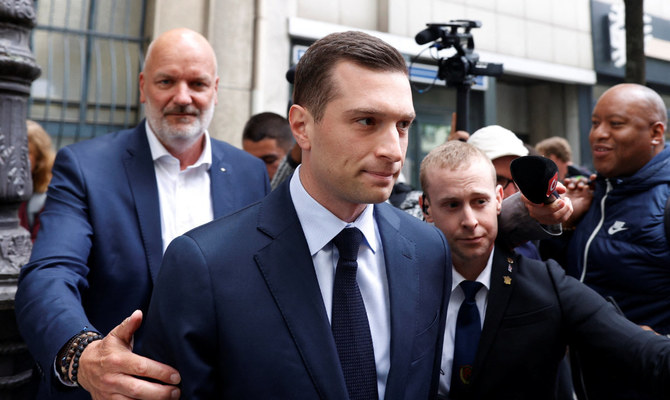n the realm of French politics, alliances often sway the tides of power. As the nation braces for snap elections, the leftists are making notable strides in consolidating their forces. This article delves into the motivations behind this alliance, its potential implications, and the strategies employed by the left to strengthen their stance.
The Call for Unity

With the announcement of snap elections looming large, leftist factions across France find themselves at a critical juncture. Historically fragmented, the left-leaning parties recognize the urgency of presenting a united front. Divisions within the left have often weakened their electoral prospects, paving the way for the dominance of centrist or right-wing forces. However, this time, there seems to be a concerted effort to bridge the gaps and form a formidable coalition.
Motivations Behind the Alliance
Several factors drive the push for leftist unity. Foremost among them is the desire to capitalize on the growing discontentment among voters. Economic instability, social inequality, and dissatisfaction with the current administration have fueled a sense of disillusionment, particularly among progressive-leaning citizens. By presenting a unified alternative, the left aims to channel this discontent into electoral success.
Moreover, the specter of right-wing ascendancy looms large. With the rise of populist and nationalist sentiments, there’s a palpable fear among leftists of being marginalized further if they fail to coalesce. By forging alliances, they seek to not only broaden their electoral base but also to prevent a fractured left from handing victory to their ideological adversaries.
Challenges and Compromises
While the call for unity resonates strongly among grassroots activists and certain party leaders, challenges abound in consolidating diverse ideologies and agendas. The left encompasses a broad spectrum, ranging from moderate social democrats to more radical leftist factions. Ideological differences, long-standing rivalries, and varying strategic priorities present formidable hurdles on the path to unity.
Compromises are inevitable in such endeavors. Parties must navigate intricate negotiations, often sacrificing certain principles for the sake of cohesion. Balancing ideological purity with pragmatic electoral calculus is a delicate dance, one that requires adept leadership and a willingness to prioritize collective goals over individual ambitions.
Strategic Maneuvers
The quest for unity extends beyond mere rhetoric; it involves tangible strategic maneuvers aimed at maximizing electoral gains. Coalition-building efforts entail strategic seat allocations, wherein parties negotiate to avoid vote-splitting in key constituencies. Furthermore, joint policy platforms are crafted to present a coherent vision to voters, emphasizing common objectives while accommodating divergent viewpoints.
In addition to internal cohesion, the leftists are also keenly aware of the importance of reaching out to potential allies beyond their traditional base. Outreach to grassroots movements, civil society organizations, and disaffected voters disillusioned with mainstream politics forms an integral part of their strategy.
Implications for French Politics
The emergence of a unified leftist front carries significant implications for the French political landscape. A strengthened left-wing bloc not only poses a formidable challenge to incumbent parties but also has the potential to reshape the dynamics of governance. In the event of electoral success, the leftists could wield considerable influence in shaping policy agendas, pushing for progressive reforms, and championing socio-economic justice.
However, the success of the leftist alliance is by no means guaranteed. Electoral politics is fraught with uncertainties, and the efficacy of unity efforts hinges on various factors, including voter turnout, campaign dynamics, and unforeseen events that could alter the electoral calculus.
Analysis Table: Strengths and Weaknesses of Leftist Alliance
| Strengths | Weaknesses |
|---|---|
| Broadens electoral base | Ideological differences |
| Presents unified alternative | Risk of internal divisions |
| Capitalizes on discontentment | Potential for strategic disagreements |
| Counters right-wing ascendancy | Compromises on core principles |
| Maximizes influence if successful | Challenges in policy coherence |
Comparative Table: Leftist Alliance vs. Competing Coalitions
| Leftist Alliance | Competing Coalition (Centrist/Right-Wing) |
|---|---|
| Broad ideological spectrum | Centrist orientation |
| Emphasis on social justice | Market-oriented policies |
| Grassroots mobilization | Establishment support |
| Anti-establishment rhetoric | Pro-business agenda |
| Embraces diversity | Focus on stability and security |
Conclusion
As France braces for snap elections, the consolidation of leftist forces marks a significant development in the political landscape. The call for unity underscores the recognition of shared goals and the imperative of collective action in challenging the status quo. While challenges loom large, the leftist alliance embodies a potent force that could potentially reshape the trajectory of French politics, offering a compelling alternative to the prevailing centrist or right-wing narratives. As the electoral battle unfolds, the efficacy of this alliance will be put to the test, ultimately determining the course of governance and the future direction of the nation.










